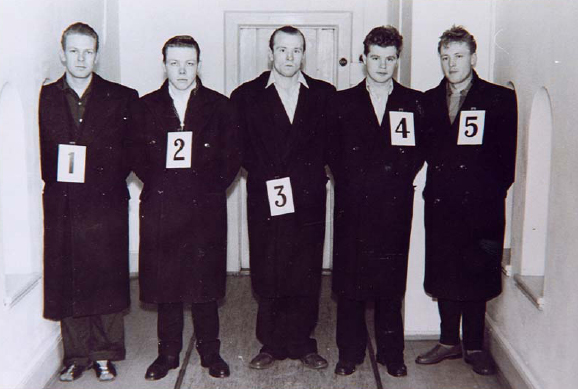Would you recognize the perpetrator? What do you need to know when you have to make an identification from a lineup?
Would you be able to pick out the right person from a lineup? We discuss the role of various factors that can influence the decision-making process of eyewitnesses during the lineup procedures.
In 1985, Ronald Cotton was sentenced to life plus 54 years, based largely on a lineup identification. Tragically, DNA analyses performed in 1994 showed that Cotton was innocent. Although eyewitness identifications often provide important leads in police investigations, they can entail the risk of a wrongful conviction and miscarriage of justice. Would you be able to pick out the right person from a lineup? In this article we will take a closer look at different variables that can influence a witness’ decision-making during the identification procedure. Knowledge about these can help to increase witnesses' awareness of such influences that would otherwise remain unnoticed. This can ultimately help decision-makers to use more diagnostic information in their evaluations of eyewitness identification decisions.
Every day we are confronted with a multitude of faces and have to decide whether or not we are familiar with them. Mostly, our assessments are correct, as humans are actually experts in recognizing familiar faces. However, recognizing unfamiliar faces or those that we have encountered for only a short period of time is much more difficult (Johnston & Edmonds, 2009). For example, the use of pictures on credit cards for verifying the identity of the customer has proven to be far less beneficial than originally believed. In an experiment, researchers varied the similarity between a credit card picture and a mock customer (Kemp, Towell, & Pike, 1997). The mismatch between the picture and the customer was recognized in only 1/3 (high similarity) and 2/3 (low similarity) of the cases. Credit card fraud is but one offence in which face recognition plays an important role. Indeed, police investigations following muggings, robberies, rape and other serious offences frequently involve procedures in which eyewitnesses and victims are asked to identify the perpetrators. Yet, these identifications are often problematic.
In July 1984, a man broke into two apartments and sexually assaulted two women (see Thompson-Cannino, Cotton, & Torneo, 2010, and http://www.innocenceproject.org/Content/Ronald_Cotton.php, for a detailed description of the case). Ronald Cotton soon became a suspect and one of the victims, Jennifer Thompson, identified him from a photo lineup and subsequently from a live lineup. Further evidence of the prosecution involved a flashlight found in Cotton’s home that resembled the one used by the assailant, and rubber from Cotton’s tennis shoe that was consistent with rubber found at one of the crime scenes. Cotton was convicted and sentenced to life plus 54 years.
In 1994, the case drew the attention of the Innocence Project, a non-profit legal clinic that assists prisoners who could be proven innocent through DNA (deoxyribonucleic acid) testing. The mandated DNA tests revealed that the samples from one victim were too deteriorated to be conclusive, while those from the other victim showed no match with Cotton’s DNA. Consequently, Cotton was officially cleared of all charges and released from prison and officially pardoned.
Since 1992, the Innocence Project has been involved in the exoneration of more than 270 wrongly convicted persons. In 75% of these cases, incorrect eyewitness identifications were involved. Eyewitness identification evidence appears to be convincing to most people, including juries (Boyce, Lindsay, & Brimacombe, 2008; Wells, Penrod, & Memon, 2006). But it is obvious that things can go wrong, entailing high costs to both an innocent convict as well as society, as the true perpetrator is still free.



